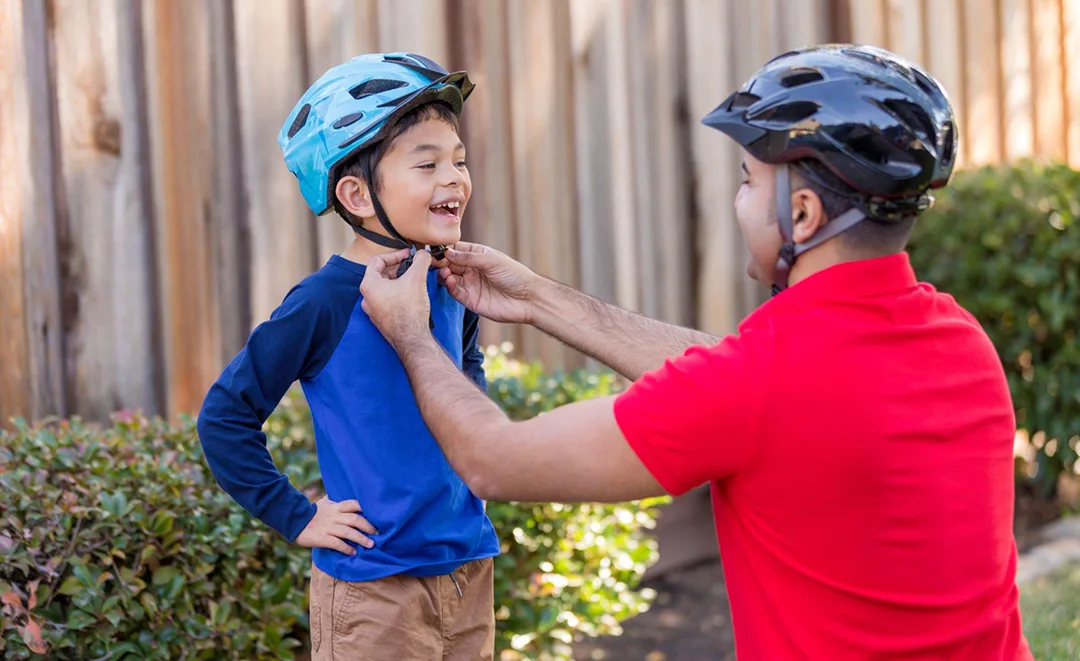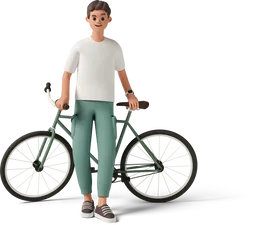
Hey there! If you’re new to cycling, one of the first things you’ll need is a properly fitted bike helmet.
I know searching for the right size helmet can be confusing, but this guide will make it easy.
I’ll explain everything you need to know about measuring your head, reading size charts, and finding the perfect helmet for you or your kids.
Stick with me and you’ll be picking out stylish brain buckets in no time!
Let’s start with the basics – how helmet sizes are measured.
Most brands determine sizes based on the circumference of your head.
This is typically measured in inches or centimeters just above your eyebrows and around the largest part of your head.
Here’s a handy size chart to use as a reference:
| Size | Head Circumference (inches) | Head Circumference (cm) | Typical Age Range |
|---|---|---|---|
| XXXXXS | 18.11 | 46 | 0-1 years |
| XXS | 18.5 | 47 | 1-2 years |
| 6 | 19 | 48.3 | 3-4 years |
| 6 1/8 | 19 3/8 | 49.2 | 4-5 years |
| 6 1/4 | 19 3/4 | 50.2 | 5-6 years |
| 6 3/8 | 20 1/8 | 51.1 | 5-7 years |
| 6 1/2 | 20 1/2 | 52.1 | 6-10 years |
| 6 5/8 | 20 7/8 | 53 | 7-11 years |
| 6 3/4 | 21 1/4 | 54 | 8-12 years |
| 6 7/8 | 21 5/8 | 55 | 9-13 years |
| 7 | 22 | 55.9 | 10-14 years |
| 7 1/8 | 22 3/8 | 56.8 | 11-15 years |
| 7 1/4 | 22 3/4 | 57.8 | 12-16 years |
| 7 3/8 | 23 1/8 | 58.7 | 12-16 years |
| 7 1/2 | 23 1/2 | 59.7 | 13-17 years |
| 7 5/8 | 23 7/8 | 60.6 | 14+ years |
| 7 3/4 | 24 1/4 | 61.6 | 14+ years |
| 7 7/8 | 24 5/8 | 62.5 | Adult |
| 8 | 25 | 63.5 | Adult |
| 8 1/8 | 25 3/8 | 64.4 | Adult |
| 8 1/4 | 25 3/4 | 65.4 | Adult |
As you can see, helmet sizes generally correspond to hat sizes, but the exact fit can vary depending on the brand and model.
Most adult helmets range from small to large, covering head circumferences from around 52-62 cm or 20.5-24.4 inches.
Youth and children’s helmets start around 46 cm or 18 inches.
I’ll go into more detail on how to use this chart properly in a bit.
First, let’s go over how to measure your noggin!
To find your perfect helmet size, you’ll need to accurately measure the circumference of your head.
Here’s a simple step-by-step guide:
See, learning your helmet size isn’t so tough!
Now let’s talk about how to take the measurement of a wiggly kiddo…
Getting an accurate measurement for a child’s head circumference requires a bit more finesse.
Kids don’t always love sitting still for head measurements.
Here are some tips to make it easier:
Move slowly and patiently.
It may take a few tries to get an accurate read.
Allow wiggle room in your schedule and don’t force it if they become upset.
Recording a couple different measurements allows room for error.
The right motivation and restraint, along with a dash of creativity, and you’ll have that measurement in no time!
The average 10-year-old has a head circumference of 20-21.25 inches (51–54 cm).
According to the size chart, that puts most kids this age in the small to medium helmet range.
However, all kids grow at different rates, so always measure first.
If your 10-year-old falls outside the average range, go by their individual measurement, not their age.
Proper fit is essential.
For borderline measurements, consider sizing up to allow room for growth.
Kids’ heads grow rapidly and you don’t want them outgrowing a helmet after one season.
Leave room for thick winter headwear too.
Some kids in this age range may still fit youth helmets, which often come in fun colors and patterns they’ll love.
If in doubt, consult your local bike shop on the best options.
And don’t forget to model safe behavior by wearing your own helmet every time you ride!
A 22-inch (55.9 cm) head circumference falls into the large adult helmet size range.
Looking at the chart, 22 inches is on the smaller end of large.
With this measurement, you have some flexibility.
Large-size helmets from most manufacturers should fit comfortably.
You may want to try some XXL helmets too, especially brands labeled “large/XL.”
The XXL will give you a little more wiggle room in the fit.
I always recommend trying on a few options around your size measurement.
Helmet shapes and interior padding differ between brands.
A Bell helmet may fit slightly different than a Giro or Specialized, even if they are all large.
Don’t settle if a helmet doesn’t feel secure or comfortable on your 22-inch head.
A proper fit should encapsulate your head snugly without pinching.
Keep trying helmets until you find that just right feeling.
Safety and comfort are non-negotiable!
I get this question a lot since helmet sizing can be tricky.
If your head measurement falls between the cracks of two sizes, follow these tips:
For example, if your head measures 57 cm, that puts you between a medium and a large.
I would size up to large if you ride with a thick headband.
But I would size down to medium for a child near the lower end of that range to leave room to grow.
Getting the right fit means safely maximizing the helmet’s protection.
Don’t hesitate to swap sizes during your search.
Consult staff for guidance too.
A little trial and error will lead you to the perfect match.
Here are my top tips for using your head measurement to buy the perfect bike helmet:
Take your time and don’t settle.
A helmet should fit like a glove, keeping you safe and comfortable on every ride.
Following this guide and using the tips above will set you up for success.
Finding your perfect bike helmet match doesn’t have to be a painful process.
Arm yourself with a soft measuring tape, utilize the size chart as a guide, and remember to try on a range of options around your measurement.
Consult the experts at your local bike shop and listen to your gut – you’ll know the right fit when you feel it.
A snug and secure helmet means you’re ready to ride safely and comfortably.
Here’s to many happy helmet-haired miles ahead!
Let me know if you have any other bike safety questions.
For now, get out there and start wheeling around in your new favorite headgear. Pedal on, friends!
